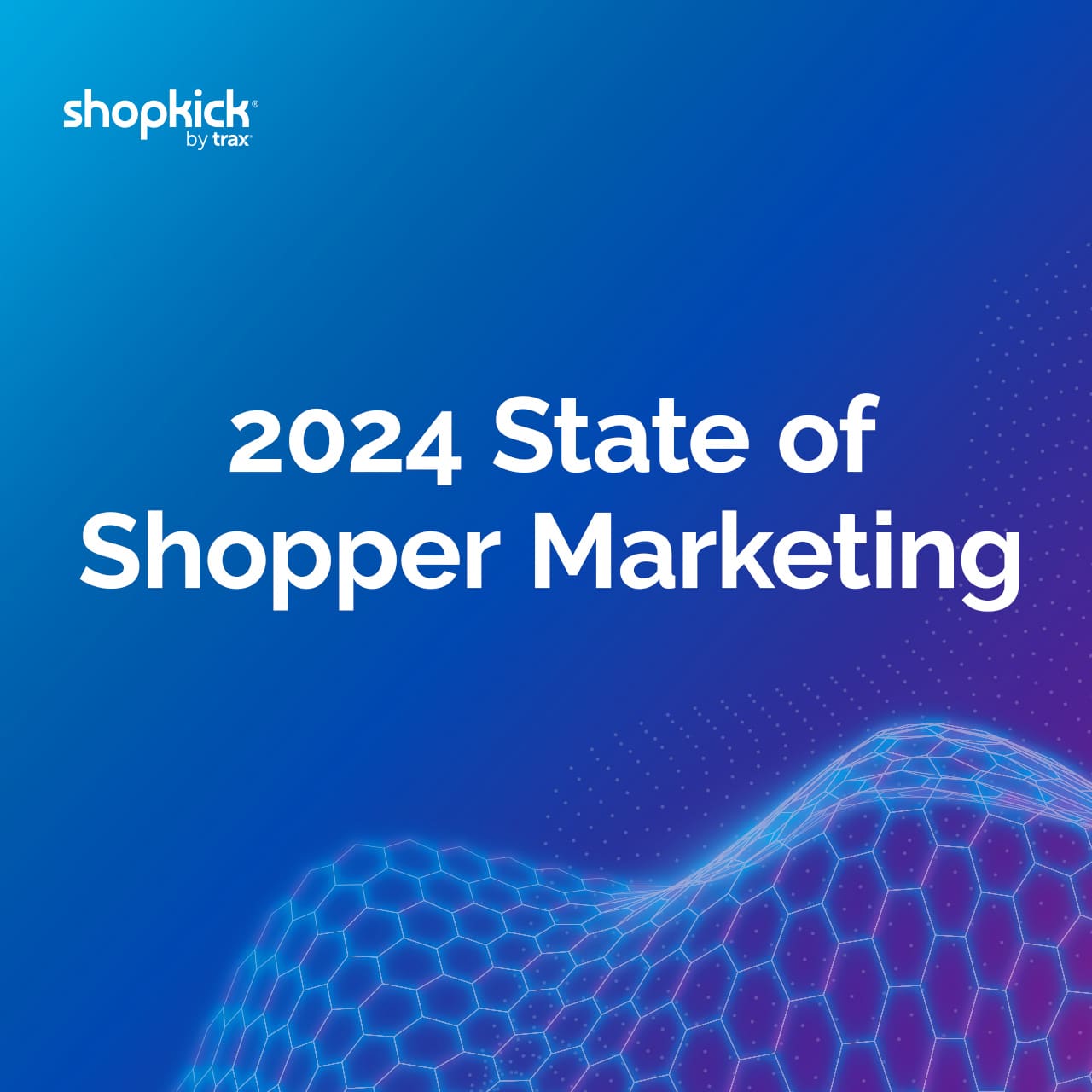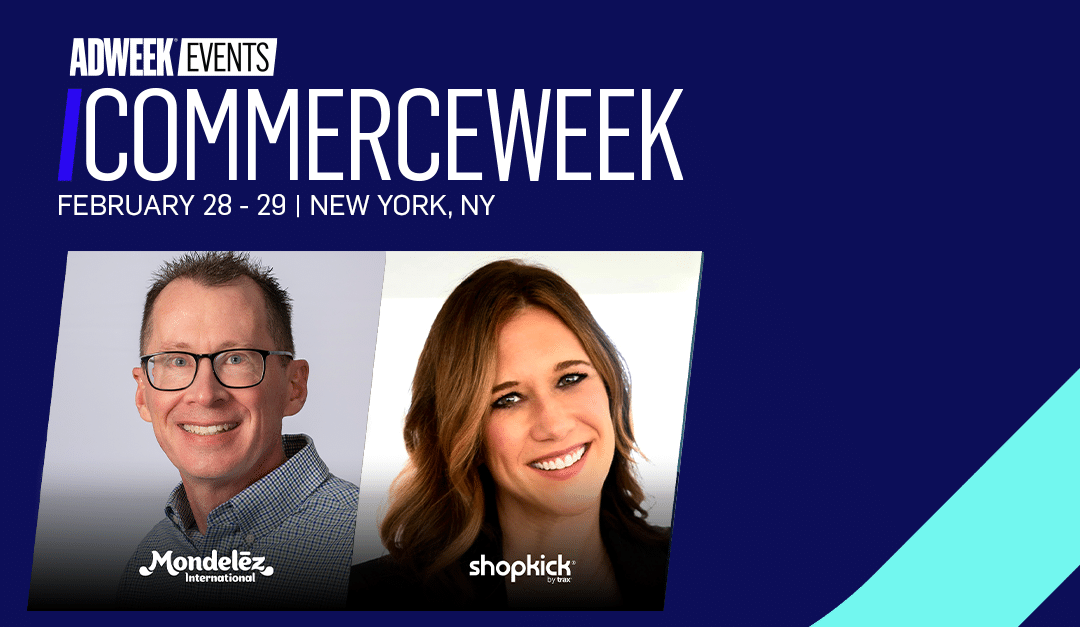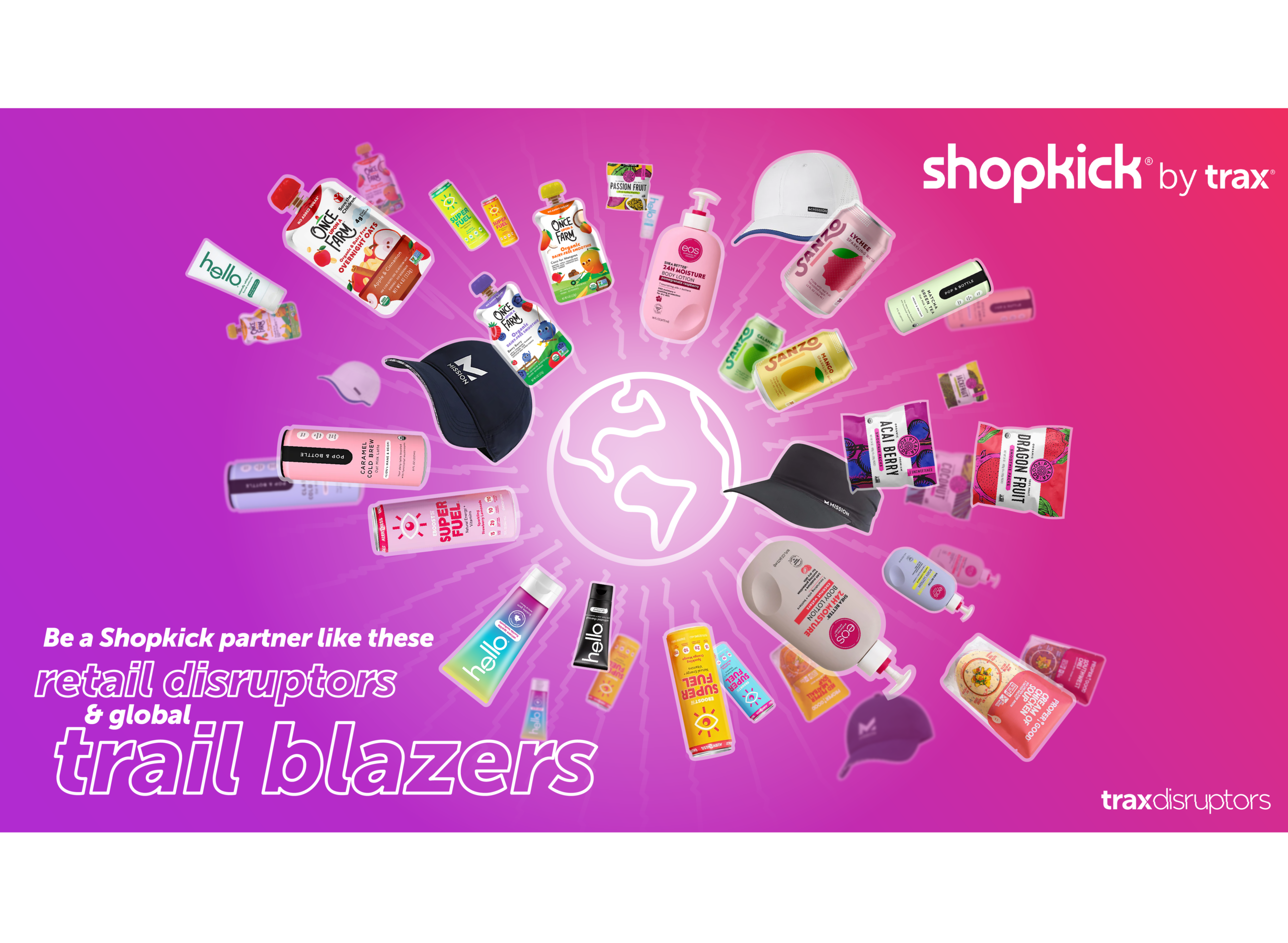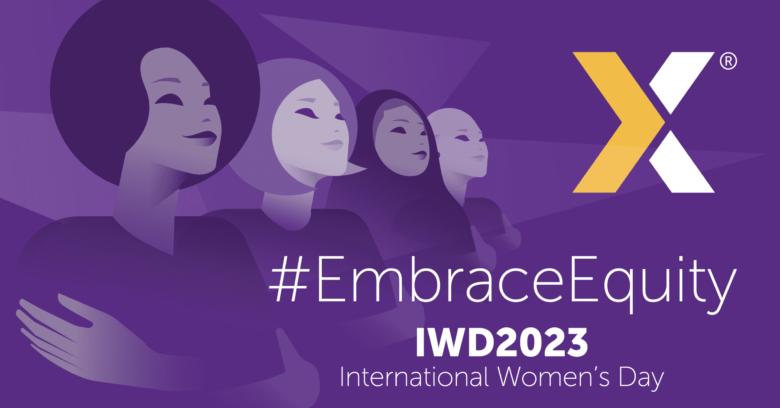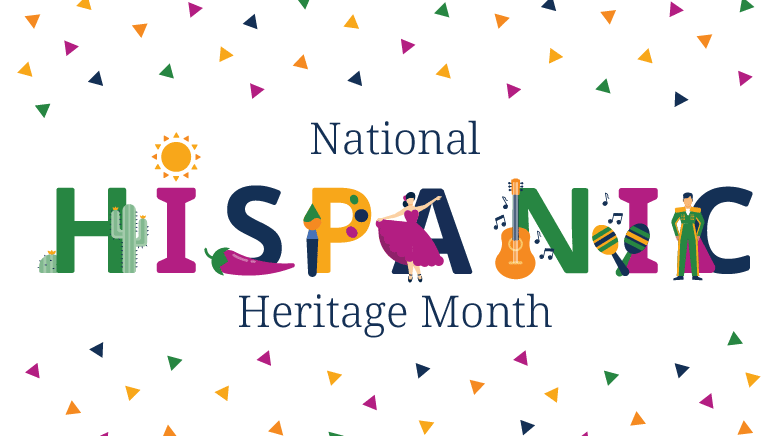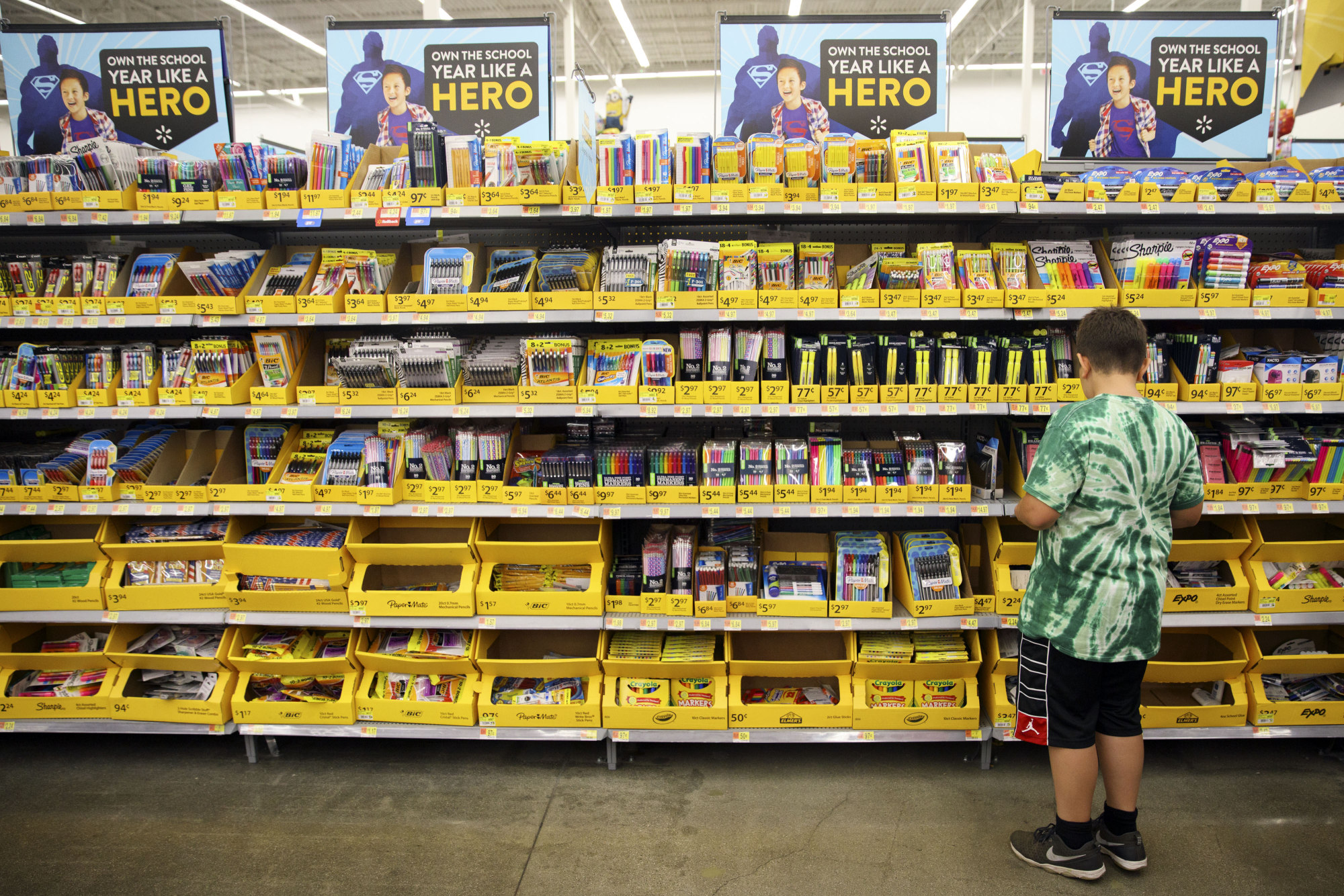Join us as we dive into the evolving landscape of consumer loyalty in the CPG industry. With Instacart, in-store pick-up, and other grocery innovations shaking up the market, the traditional concept of brand loyalty is being redefined. After surveying over 10,000 consumers, the number one reason why consumers shift in loyalty for CPG brands is due to product not being on the shelf when they want it! In this session, we’ll dive into consumer shopping expectations and offer innovative solutions. Trax’s Signal-Based Merchandising is a new way to merchandise, providing brands with immediate access to insights for addressing out-of-stocks, phantom inventory, pricing disparities and more. It’s time to stay ahead during this pivotal point of disruption.
Author: shopkick
Boost Brand Loyalty with AI Merchandising: An Insight into 2024 Trends
Calling all retailers and CPG brands! Are you prepared for a revolutionary shift in retail? The industry is constantly evolving, and in order to stay ahead of the game, CPGs need to invest in the right tools and use AI algorithms to make data-driven decisions for your brand. With the rise of e-commerce and the growing importance of customer loyalty, it’s crucial to have AI enhanced merchandising strategies in place. And with the help of Artificial Intelligence (AI), retailers can improve the shopping experience in both physical and digital spaces. In today’s fast-paced and competitive market, AI merchandising is no longer a luxury, but a necessity.
The Power of AI in Retail Transformation
Embark on a transformative journey with AI, the linchpin of retail innovation, where it morphs from a buzzword to the core of consumer journeys. This revolution goes beyond data sets and analytics for forecasting and optimization, but instead lays the groundwork for hyper-personalized marketing strategies that ensure impactful new product placements and promotions. AI’s magic unfolds in offering targeted suggestions akin to a trusted friend’s guidance, a feature Shopkick harnesses to reward users for interactions and purchases. This AI-driven personalization anticipates and satisfies consumer desires, propelling the customer experience into a realm of anticipatory engagement and nurturing unshakable brand loyalty.
Spotlight on Success: Nike and Sephora’s AI Triumphs
In the arena of AI innovation and customer data, Nike and Sephora stand as titans, showcasing how technology can transform the consumer journey into something extraordinary. Sephora, a beauty behemoth, leverages AI and customer preferences to deliver a personalized shopping odyssey. With its app acting as a digital makeup artist that doesn’t require you to be in-store, Sephora offers customized product suggestions, making each user’s experience deeply personal and highly engaging. This technological embrace extends beyond convenience, inviting users to dive into a world of beauty exploration, where their shared experiences amplify brand loyalty and create a vibrant, community-driven narrative.
Meanwhile, Nike is breaking records with its AI-driven approach to product design and customer service. By utilizing AI to generate unique designs, Nike taps into the pulse of consumer demand for distinctiveness and self-expression. Their application of AI in predicting the perfect shoe fit eliminates the uncertainties of online shopping, ensuring every purchase feels tailor-made. This precision not only enhances the shopping and user experience but also fortifies customer trust and satisfaction.
Together, Nike and Sephora illuminate the path forward, demonstrating that AI, when applied with insight and ingenuity, crafts experiences that resonate on a personal level, with customer engagement that sets the stage for a future where brand engagement is not just observed but passionately felt.
Overcoming Consumer Skepticism: The Role of Transparency and Trust
Navigating the maze of consumer skepticism is a challenge that demands unwavering commitment to transparency and trust. With 76% of consumers wary of AI’s potential for misinformation and 38% feeling uneasy about new tech in their grocery aisles, the call to action for brands is clear: step up and reassure your audience. This isn’t about merely disclosing how AI tools are applied in the shopping experience; it’s about championing ethical technology use, fiercely guarding consumer privacy, and standing as a beacon of data security. To quell the fears and anxieties swirling around AI, brands must embark on a mission of enlightenment, shedding light on the mechanisms of AI with an honesty that resonates and reassures. The path forward involves not just using AI responsibly, but communicating its benefits and safeguards with a clarity that cuts through the noise, demonstrating a steadfast dedication to consumer well-being. This commitment to ethical AI use is the linchpin in cultivating a landscape where trust flourishes and brand loyalty thrives in the rich soil of transparency.
AI-Enhanced Merchandising Strategies That Connect
Embrace the cutting-edge revolution of AI-enhanced merchandising strategies to forge unbreakable bonds with your consumers. This isn’t about simply meeting expectations; it’s about exceeding them, creating an environment where personalized experiences become the cornerstone of every interaction. Imagine leveraging AI to offer not just any product recommendation, but the perfect suggestion that resonates with each individual’s unique tastes and needs. Picture AI-powered chatbots and virtual assistants transforming customer service from a routine task into a delightful journey of discovery and support. These strategies are about crafting an unparalleled shopping adventure that makes consumers feel recognized, valued, and understood on a profound level. Implementing such AI-driven tactics propels your brand into a realm of unmatched engagement and loyalty, where every marketing effort is not just seen but felt deeply by your audience. This is the era of personalized merchandising, where AI is your ally in delivering not just products, pricing strategies or inventory management, but experiences that captivate and enchant, paving the way for a future where brand connections are not just formed—they’re fortified.
However, as consumers face an influx of generative AI content, there lies a crucial need to reassure them about the safety and security of these advancements throughout their decision making process. Winning customer trust involves convincingly demonstrating that AI tools are not just about automation and deals but are firmly anchored in stringent data protection measures.
The Future is Now: Embracing AI for Retail Success
For brands to thrive, adopting AI-enhanced merchandising strategies is not just advantageous—it’s imperative. Enter Shopkick, pioneering the way by utilizing AI to make each shopping journey not only seamless but deeply personalized throughout their customer journey. This goes beyond mere convenience, as Shopkick leverages consumer data with transparency, ensuring a shopping experience that is both intuitive and enriching. By engaging customers through AI-powered navigation aids and personalized recommendations, Shopkick is setting a benchmark for how brands can foster customer satisfaction, loyalty and trust. It’s a testament to how the strategic application of AI can safeguard consumer data and metrics, while simultaneously amplifying the shopping experience. In an era where operational efficiency and consumer engagement are paramount, tools like Shopkick are not just beneficial; they are essential. As we step into this new dawn of retail, embracing AI with a focus on ethical use and consumer benefits isn’t just the smart choice—it’s the only way forward for brands aiming for sustained success and relevance.
Want to uncover other trends reshaping the retail landscape? Check out the full 2024 Trends report for actionable insights.
Navigating the Consumer Journey: Awareness to Conversions
At a AdWeek retail event Shopkick’s Vice President of CPG and Retail Partnerships, Stephanie McHale talked with Mondelez’s Regional Vice President, Omni Shopper Activation and Strategic Partnership, Steve McGowan. The event provided valuable insights into adapting strategies to meet the changing needs and preferences of shoppers. Here’s a recap of some key takeaways from the discussion:
- Embracing Digital Engagement: With the Shopkick app at the forefront, attendees explored the integration of digital engagement with physical retail experiences. Shopkick’s Vice President highlighted the app’s role in engaging shoppers from discovery to purchase, emphasizing the importance of seamlessly blending digital and in-store experiences.
- Prioritizing Shopper-Centric Strategies: Amidst constant consumer evolution, speakers emphasized the need to prioritize shopper-centric strategies. By putting the shopper at the center of decision-making processes, brands can better understand and address their needs, driving engagement and loyalty.
- Balancing Digital and Physical Touchpoints: As digital influence on purchases continues to rise, speakers stressed the importance of balancing digital and physical touchpoints in the shopper journey. By combining both channels effectively, brands can maximize reach and engagement while ensuring a cohesive brand experience.
- Leveraging Data for Optimization: The integration of data analytics into retail strategies emerged as a key theme. By leveraging data insights, brands can optimize their efforts, identify best-performing tactics, and drive incremental sales growth.
- Addressing Friction in the Shopping Experience: Speakers highlighted the importance of reducing friction in the shopping experience, particularly in-store. With consumers increasingly seeking convenience and simplicity, brands must focus on streamlining processes and making shopping experiences hassle-free.
- Ensuring Product Availability: Product availability emerged as a critical factor influencing the shopper experience. By maintaining consistent product availability on shelves, brands can enhance shopper satisfaction and prevent lost sales opportunities.
- Personalization and Experiential Retail: Looking to the future, speakers envisioned a retail landscape driven by personalization and experiential offerings. By delivering personalized messaging and immersive experiences, brands can create memorable shopping journeys that resonate with consumers.
- Measuring Incrementally and ROI: Finally, speakers emphasized the importance of measuring incrementally and return on investment (ROI) in retail activations. By accurately assessing the impact of marketing efforts, brands can refine their strategies and allocate resources effectively.
The retail activation event provided valuable insights into navigating the complex consumer journey. By embracing digital engagement, prioritizing shopper-centric strategies, leveraging data analytics, and focusing on friction reduction and product availability, brands can stay ahead in an ever-evolving retail landscape. As the industry continues to evolve, personalization and experiential offerings will play a crucial role in shaping the future of retail engagement.
Disruptors or Delighters?
“If your goal is to delight – and you delight your consumers as much as you can – you end up disrupting those who were not delighting.” – Craig Dubitsky
In his keynote speech at our inaugural Disruptors Series event in January, Craig Dubitsky, Founder of Hello Products, Co-Founder of eos, early-stage investor in Method and overall industry guru, sparked a fuse that set the energy for the remainder of the day. Throughout the presentations, panels, and break-out discussions that followed, the more than 100 industry experts in attendance contemplated their use of the word “disrupt” while working to incorporate the word “delight.”
This thought-provoking concept was introduced when Craig put forth the idea that “delight” encapsulates what the best brands were actually doing (or aiming to do) for their consumers in the market, while “disrupt” more aptly describes the effect that such innovative brands have on peer or competitor brands who are continuing with the status quo. So, while disruption could eventually be a part of a brand’s journey, the path to get there should be focused on providing a product that people are delighted by.
Finding the whitespace.
Pulling inspiration from his favorite lyricist Leonard Cohen, Craig approaches innovation with the idea that “there’s a crack in everything, that’s how the light gets in.”
Overall, the bar is low for the average “stuff” people are given in the marketplace and, when delighting is not the goal of the competitors, the bar remains low. In these dormant categories, the products are mundane, thus leaving plenty of room for entrepreneurs, innovators and creators to find the crack: the opportunity to delight consumers with products that are more functional, prettier, more eco-friendly, more affordable, etc. Then, in return, this delighting of people disrupts the category, raising the bar and pushing the entire marketplace forward. Shopkick is a great solve for helping to delight consumers along the entire shopper journey. Either through lookbook quizzes, in-app messages, or in-store scavenger hunts, shoppers can interact with brands in a fun and gamified way – delighting them through those moments. Brands should look to solutions that engage consumers, not just force a transaction to create an emotional connection.
Throughout his career, Craig has lived by this “delight to disrupt” mentality by finding the whitespace in markets dominated by one way of doing things. In Craig’s world, there are no boring categories, just boring executions. So, whether it’s home cleaning products that feel safe rather than toxic (Method), a lip balm that is fun and easily found (eos), or toothpaste that abandons the clinical-feeling industry standard (Hello Products), he has helped shake up monopolized industries by introducing new items that people can enjoy, trust and even get excited about.
“Delight to disrupt.”
The ultimate goal is not to strike out the word “disrupt” from our vocabulary or the conversation completely. Rather, it’s time to recognize that there is a better way to approach the process.
The most innovative brands do not disrupt people’s lives, they delight them.
By giving people products that cater to their wants and needs while making their lives easier and better, a brand naturally edges out other brands that are not doing so – changing the market and the industry through heightened consumer expectations.
The Shopkick app brings delight to both its community and partners alike. With its innovative features and user-friendly interface, Shopkick provides an immersive and rewarding shopping experience for consumers. Users can earn points, or “kicks,” by simply walking into participating stores, scanning barcodes, and making purchases, which can be redeemed for gift cards or other exciting rewards. At the same time, Shopkick partners benefit from increased foot traffic, enhanced customer engagement, and valuable insights into consumer behavior. Shopkick’s unique approach to bridging the gap between consumers and retailers makes it a win-win for both parties, making it a truly delightful app for everyone involved.
Celebrating International Women’s Day (today and every day)
International Women’s Day is a day to recognize and honor the social, economic, cultural, and political contributions of women throughout history, in the present day, and will continue to do so in the future. It is a time to reflect on the progress that has been made toward gender equality and to acknowledge the work that still needs to be done. This year, IWD is all about #embracingequity. This isn’t just a hashtag for this year’s theme, this means recognizing and addressing the systemic barriers and discrimination that women face in all areas of life, including education, employment, healthcare, and politics. Embracing equity for women requires a commitment to creating a world where women have equal opportunities and access to resources, where their contributions are valued and celebrated, and where their voices are heard and respected. At Shopkick, by Trax, we’re celebrating International Women’s Day by showcasing our Fearless Female (as we like to call them) team members’ voices through a month packed with activities and forums where women can share their experiences and insights.
To kick this amazing day off, we thought we’d ask some of the women that are supporting Shopkick to be the best shopping engagement app, how they strive to be the best women leaders at home, at work, in their community and in their free time. See what they have to say below.
How do you empower yourself every day?
“I wake up with a glass nearly full mentality and a positive outlook for the possibilities of what each new day may bring; I keep connected to amazing friends, even if only sharing a text to say hello. I can honestly say I have best friends from a very very young age and have added my friends throughout every phase of my life. I wouldn’t be who I am without my girls!” – Pauline Echols, Senior Account Director (based in North Carolina)
“By pushing myself out of my comfort zone, having a positive attitude, and being consciously kinder to myself. I find that the more self-care I have, the more empowered I become.” – Sarah Roberts, Visual Designer (based in Texas)
“I set daily goals to accomplish and check them off my to-do list. There is something about checking even the smallest things off a list that helps make you feel like you conquered the day.” – Allison Kaminski, Regional Director (based in Illinois)
If you could have dinner with any 3 women (dead or alive), who would it be?
“RBG because she spent her life standing her ground in the face of sexism and has paved the way for so many women that have come after her. Lucille Ball because I grew up watching I Love Lucy (thanks to my mom). Not only was she brilliantly funny, but she also proved you can do it all in terms of balancing a demanding career and motherhood. Mariah Carey because she is one of the greatest singers of all time, boasting the most number one hits as a solo artist, female songwriter & female producer. Also, I think she would be a very entertaining dinner guest after a glass of wine or two .” – Joanna Riggio, Sr. Sales Planning Manager (based in New York)
“Michelle Obama, Rihanna, and Oprah Winfrey. Their stories of strength and navigating men-dominated fields, not only as women but as women of color, would be fascinating.” – Maria Baez, Content Creator (based in California)
“Oprah – she has overcome so much in her life and heard stories from people of all walks of life. Queen Elizabeth – so much to be learned from the example she set becoming a young woman in leadership with a position that was previously held by men. Brittany Mahomes – this one is just fun! I love how real and down to earth she is. I think we’d be friends :).” – Lauren Jester, Vice President, CPG & Retail Partnerships (based in Arkansas)
“Michelle Obama – she is incredible in many ways, a brilliant mind, a kind human, a great mother, a great wife, a fashion icon, and a powerhouse of a presence! Dame Joan Sutherland – my favorite voice of all time, a woman who was immensely talented but didn’t have the looks to open her doors to the theatrical world. She became world-renowned yet remained kind and always lifted other women around her. Laskarina Bouboulina – an unlikely leader during the worst times, she became a naval commander by chance and with pure grit. I am her descendant and would love to hear about her journey into commanding a fleet fighting for her country’s freedom, but also learn about our lineage.” – Helen Pastras, Lead Product Manager (based in North Carolina)
“DOLLY PARTON (I would cry), Amanda Gorman and Tara Schuster” – Sarah Roberts, Visual Designer (based in Texas)
What’s some advice you’d give younger women entering the workforce?
“Enjoy the journey and live in the moment when it comes to work. My younger self was always so eager to advance, to get ahead, to go in early and stay super late sometimes at the expense of a healthy work/life balance. Thankfully I have evolved from that and am enjoying a very healthy work/life balance as part of an organization that embraces #equity, bringing your whole self to work and where I strive to live in the moment!” Stella Araya, Senior Director, Partnerships (based in New Jersey)
“BE CONFIDENT! Women deserve it all too, so the most important advice I would give is to not cut yourself short, ask for what you deserve, and keep learning. Especially when just entering the workforce. I would also tell them to not be afraid to change their career paths, or to explore different ones, until they find something they actually like.” – Nancy Awad, Manager, User Analytics (based in Toronto, Canada)
“Relationships are everything. Embrace every role with the philosophy that you’ll work with those people again someday- treat people with respect, work hard and build a good reputation for yourself.” – Lauren Jester, Vice President, CPG & Retail Partnerships (based in Arkansas)
“Never be afraid to speak up or ask questions! Nobody at your job knows everything, and I promise that if you have a question about something, you aren’t the only one. Asking questions is a sign you are engaged and are trying to learn, which is always a great thing.” – Joanna Riggio, Sr. Sales Planning Manager (based in New York)
What can men do to help #embraceequity?
“I believe men can help to #embraceequity by using their actions and voice to advocate for their female counterparts, as well as showing support to the women in their lives by listening and setting good examples for future generations.” – Maria Baez, Content Creator (based in California)
“I have been so lucky to work with men throughout my career that #embraceequity, but of course, I have still had my fair share of negative experiences. What I think men can do to help is to not be afraid to speak up if they notice any inequality happening, and of course to always look inwards and reflect their own behaviour, and ask themselves if they are giving everyone the same opportunities and chances to learn, be heard and grow.” – Nancy Awad, Manager, User Analytics (based in Toronto, Canada)
“Actively listen to women’s perspectives and acknowledge their point of view and experiences.” – Allison Kaminski, Regional Director (based in Illinois)
“Several things need to happen to eventually lose the stereotypes that still impact women in myriad ways. I’d start with the common but immensely useful: think of your female coworkers as if they are your daughters or mothers. How would you want others to talk to them and think of them?
We are all humans with our flaws, and we will judge others. When judging, though, we should have the same standards for what is acceptable or annoying for everyone, regardless of gender identity or other differences.” – Helen Pastras, Lead Product Manager (based in North Carolina)
Strong female leadership is an integral part of Shopkick’s history, today and every day. As you can see in the responses above, #embracingequity is about recognizing the intersecting identities and experiences of women, including race, ethnicity, sexuality, ability, and socio-economic status, and working to address the unique challenges and barriers that these women face. We are so proud of our female leaders for who they at Shopkick, in their community, and at home. Here’s to each of you!!! Happy IWD.
Celebrating International Women’s Day (today and every day)
International Women’s Day is a day to recognize and honor the social, economic, cultural, and political contributions of women throughout history, in the present day, and will continue to do so in the future. It is a time to reflect on the progress that has been made toward gender equality and to acknowledge the work that still needs to be done. This year, IWD is all about #embracingequity. This isn’t just a hashtag for this year’s theme, this means recognizing and addressing the systemic barriers and discrimination that women face in all areas of life, including education, employment, healthcare, and politics. Embracing equity for women requires a commitment to creating a world where women have equal opportunities and access to resources, where their contributions are valued and celebrated, and where their voices are heard and respected. At Shopkick, by Trax, we’re celebrating International Women’s Day by showcasing our Fearless Female (as we like to call them) team members’ voices through a month packed with activities and forums where women can share their experiences and insights.
To kick this amazing day off, we thought we’d ask some of the women that are supporting Shopkick to be the best shopping engagement app, how they strive to be the best women leaders at home, at work, in their community and in their free time. See what they have to say below.
How do you empower yourself every day?
“I wake up with a glass nearly full mentality and a positive outlook for the possibilities of what each new day may bring; I keep connected to amazing friends, even if only sharing a text to say hello. I can honestly say I have best friends from a very very young age and have added my friends throughout every phase of my life. I wouldn’t be who I am without my girls!” – Pauline Echols, Senior Account Director (based in North Carolina)
“By pushing myself out of my comfort zone, having a positive attitude, and being consciously kinder to myself. I find that the more self-care I have, the more empowered I become.” – Sarah Roberts, Visual Designer (based in Texas)
“I set daily goals to accomplish and check them off my to-do list. There is something about checking even the smallest things off a list that helps make you feel like you conquered the day.” – Allison Kaminski, Regional Director (based in Illinois)
If you could have dinner with any 3 women (dead or alive), who would it be?
“RBG because she spent her life standing her ground in the face of sexism and has paved the way for so many women that have come after her. Lucille Ball because I grew up watching I Love Lucy (thanks to my mom). Not only was she brilliantly funny, but she also proved you can do it all in terms of balancing a demanding career and motherhood. Mariah Carey because she is one of the greatest singers of all time, boasting the most number one hits as a solo artist, female songwriter & female producer. Also, I think she would be a very entertaining dinner guest after a glass of wine or two .” – Joanna Riggio, Sr. Sales Planning Manager (based in New York)
“Michelle Obama, Rihanna, and Oprah Winfrey. Their stories of strength and navigating men-dominated fields, not only as women but as women of color, would be fascinating.” – Maria Baez, Content Creator (based in California)
“Michelle Obama – she is incredible in many ways, a brilliant mind, a kind human, a great mother, a great wife, a fashion icon, and a powerhouse of a presence! Dame Joan Sutherland – my favorite voice of all time, a woman who was immensely talented but didn’t have the looks to open her doors to the theatrical world. She became world-renowned yet remained kind and always lifted other women around her. Laskarina Bouboulina – an unlikely leader during the worst times, she became a naval commander by chance and with pure grit. I am her descendant and would love to hear about her journey into commanding a fleet fighting for her country’s freedom, but also learn about our lineage.” – Helen Pastras, Lead Product Manager (based in North Carolina)
“DOLLY PARTON (I would cry), Amanda Gorman and Tara Schuster” – Sarah Roberts, Visual Designer (based in Texas)
What is some advice you’d give younger women entering the workforce?
“Enjoy the journey and live in the moment when it comes to work. My younger self was always so eager to advance, to get ahead, to go in early and stay super late sometimes at the expense of a healthy work/life balance. Thankfully I have evolved from that and am enjoying a very healthy work/life balance as part of an organization that embraces #equity, bringing your whole self to work and where I strive to live in the moment!” Stella Araya, Senior Director, Partnerships (based in New Jersey)
“BE CONFIDENT! Women deserve it all too, so the most important advice I would give is to not cut yourself short, ask for what you deserve, and keep learning. Especially when just entering the workforce. I would also tell them to not be afraid to change their career paths, or to explore different ones, until they find something they actually like.” – Nancy Awad, Manager, User Analytics (based in Toronto, Canada)
“Never be afraid to speak up or ask questions! Nobody at your job knows everything, and I promise that if you have a question about something, you aren’t the only one. Asking questions is a sign you are engaged and are trying to learn, which is always a great thing.” – Joanna Riggio, Sr. Sales Planning Manager (based in New York)
What can men do to help #embraceequity?
“I believe men can help to #embraceequity by using their actions and voice to advocate for their female counterparts, as well as showing support to the women in their lives by listening and setting good examples for future generations.” – Maria Baez, Content Creator (based in California)
“I have been so lucky to work with men throughout my career that #embraceequity, but of course, I have still had my fair share of negative experiences. What I think men can do to help is to not be afraid to speak up if they notice any inequality happening, and of course to always look inwards and reflect their own behaviour, and ask themselves if they are giving everyone the same opportunities and chances to learn, be heard and grow.” – Nancy Awad, Manager, User Analytics (based in Toronto, Canada)
“Actively listen to women’s perspectives and acknowledge their point of view and experiences.” – Allison Kaminski, Regional Director (based in Illinois)
“Several things need to happen to eventually lose the stereotypes that still impact women in myriad ways. I’d start with the common but immensely useful: think of your female coworkers as if they are your daughters or mothers. How would you want others to talk to them and think of them?
We are all humans with our flaws, and we will judge others. When judging, though, we should have the same standards for what is acceptable or annoying for everyone, regardless of gender identity or other differences.” – Helen Pastras, Lead Product Manager (based in North Carolina)
Strong female leadership is an integral part of Shopkick’s history, today and every day. As you can see in the responses above, #embracingequity is about recognizing the intersecting identities and experiences of women, including race, ethnicity, sexuality, ability, and socio-economic status, and working to address the unique challenges and barriers that these women face. We are so proud of our female leaders for who they at Shopkick, in their community, and at home. Here’s to each of you!!! Happy IWD.
Shopkick Celebrates Hispanic Heritage Month
September 15 marked the start of Hispanic Heritage Month, which lasts until October 15. Here at Shopkick, we are proud to celebrate our employees and partners across diverse backgrounds and foster an inclusive culture both internally and within our app for our Shopkick Community. We are invested in learning about different cultures, as this is what makes each of us unique. We are thrilled to share some stories from our team members, Shopkick community, and partners on their favorite Hispanic traditions, foods, brands, and more!
Question: What is your favorite Hispanic food or dish that you made with your family growing up?
Sam Alvarez (Marketing Associate): My favorite Cuban dish is arroz con bistec (rice with steak). Cuban steak is very thin and marinated with garlic and topped with onions. My Abuelo was a chef from Cuba so having any of his dishes was delicious and authentic!
Stella Araya-Weil (Senior Account Director): Adobo! Adobo is actually the national dish of the Philippines with Spanish roots coming from the word adobar, meaning marinade, sauce or seasoning. The dish is either pork or chicken (or both!) and it is marinated in soy sauce and vinegar. The history of the dish goes back to Spain and Portugal, as the Spaniards occupied the PI Islands for 300 years.
Kimberly Ruiz Beck (Chairman, Ruiz Foods): My Grandmother Rosie was an amazing cook and as kids, we loved any time we knew we were going to her house, especially when she was preparing a meal. She could tell what a dish needed just by taking a small taste. “Add a pinch of cumin,” she would say. And she’d be right. It was fun to be side-by-side with her in the kitchen, learning as much as I could.
Her enchiladas, tamales, chile rellenos … and so much more … were such family and friend favorites that her recipes became the flavor profiles for our El Monterey frozen Mexican food line. Grandma Rosie believed in quality and great taste, a commitment my father, Fred, and his father, Louis, embraced when they formed Ruiz Foods. I am proud to say it is a commitment we have also made as we continue the tradition of offering our consumer a wide variety of Mexican food products.
Araceli Castaneda (Senior Marketing Associate): Making tamales with my family growing up will forever be one of my favorite foods. While these can be exhausting to make, especially when cooking for the whole family, I’ve always enjoyed helping my mom and aunts in the kitchen. Plus, I get to learn the recipe that I can continue to pass on!
Eric Batista (Shopkick Community Member): Hands down picadillo. It’s such a simple meal, but with a ton of flavor. This was the go-to for big family get-togethers growing up and brings back such great memories.
Question: What is your favorite Hispanic tradition or activities?
Sam: Making cascarones. These are similar to Easter eggs, but we decorate the outside of the eggs and fill them with confetti. It is a tradition to “crack” the confetti eggs on each other’s heads during Easter egg hunts.
Stella: Celebrating Dia de los Muertos, Day of the Dead – a Mexican custom after Halloween that is celebrated November 1-2. Ornate costumes with makeup are worn, and families gather and decorate gravesites to commemorate loved ones who have passed on. It is a day of festivities and remembrance and honoring those who have passed. Every few years we try to celebrate the Holiday in Mexico as a family – coincidentally my daughter was born on November 1 so there are so many reasons to celebrate.
Kimberly: There’s nothing better than family gatherings. When I was young, it was always my favorite time to get together with my siblings and the rest of the family.
Now that we are all grown with families of our own, our gatherings may not be as frequent, but when we get together it can seem what I like to call ‘controlled chaos’. With four generations, family gatherings can be quite large but when my children’s grandmother says it’s time to eat, the chaos magically quiets and everyone sits down in anticipation of her chile verde, enchiladas, or mole.
It’s the getting together over great food, sharing, laughing, and catching up on what everyone is doing that is the most enjoyable and memorable.
Araceli: My favorite tradition continues to be celebrating Noche Buena aka Christmas Eve with my family. We all gather to enjoy delicious foods, play games, dance (or sing karaoke) and open our gifts at midnight.
Eric: If we’re talking holidays, definitely New Year’s, my family roasts’ a whole pig – a common tradition in Cuba – and we all gather for a full day of celebrating, eating, and a few too many cocktails (if there is such a thing ). Though the majority of my family now lives in the US, we love to keep a lot of our Cuban Heritage traditions going, especially those that involve family and food.
Question: Is there anything you would want others to know about Hispanic Heritage Month?
Sam: A lot of people are confused about why Hispanic Heritage Month starts on September 15 and ends on October 15! It’s because many countries celebrate Independence Day on September 15 – 16 and Mexico celebrates Race Day on October 12!
Stella: I am originally from the Philippines, which culturally is a combination of Asian + Hispanic influences. I love and support Hispanic Heritage month as an ally and homage to my Spanish background… my maiden name is Araya and my mother’s maiden name is Espinosa – both my mother and father’s sides have Spanish ancestors.
Kimberly: For me, Hispanic Heritage month is a reminder of what my Grandparents experienced when they were growing up. They were born in Mexico, emigrated to America, and believed if they worked hard and remain dedicated, they could see their American Dream come true. In 1964, my dad and grandfather did just that when they co-founded Ruiz Foods. Over 50 years later, we employ over 4,000 Team Members in five manufacturing facilities in the United States. We remain committed to provide our consumer with great tasting food and I am proud to say our El Monterey frozen Mexican food is #1 in the marketplace.
Araceli: Hispanic Heritage Month gives everyone the opportunity to celebrate the importance of Hispanic and Latinx cultural and leadership contributions to communities throughout the United States.
Eric: Hispanic Heritage Month is such an amazing time to share with others about Hispanic culture and history. I love the teaching aspect of the month – if you are ever unsure why we celebrate, just ask, I can’t speak for everyone, but I know for me, my family and friends, love using Hispanic Heritage Month as a moment to teach others and spread the knowledge.
Question: What is your dream Hispanic brand to be featured in-app?
Sam: Jumex! They have lots of juices that I drank growing up as a kid! My favorite is Mango.
Stella: It would be a dream to have Hispanic destinations/countries/states with high Hispanic population featured in the app. As far as brands are concerned, I think our shoppers would also love cerveza, chips and salsa brands!
Araceli: My dream Hispanic brand to be featured in-app would have to be Jarritos. The fruit-flavored sodas from Mexico pair great with any dish, especially tacos!
Eric: Café Bustelo! It’s our go-to k-cup brand of coffee. My mom might think I’m crazy for choosing Café Bustelo in the morning over traditional Cuban Coffee, but it packs a punch. Bring them in the app, please.
We are so proud to have a diverse group of employees, users, and partners here at Shopkick. We celebrate all cultures and differences, and we are thrilled to be celebrating Hispanic Heritage Month! The Shopkick app has been a great place to showcase and celebrate Latinx brands and foods like Siete Foods, El Monterey, Tyson tortillas, Ulta Beauty’s Latin-founded brands, Walmart’s Hispanic-focused books, and many more. No matter your tradition or heritage, at Shopkick, we celebrate your authentic background and look forward to many more celebrations.
79 Percent of Consumers Expect Inflation to Impact their Back-To-School Shopping
Shopkick survey finds that 77 percent of consumers plan to take advantage of the sales tax-free weekend(s) in their state to save money on back-to-school shopping
With US inflation being the highest it has been in four decades, consumers are looking for ways to cut costs — especially when it comes to back-to-school shopping. As American families head in-store to stock up on school supplies, 75 percent of consumers say their top priority is getting the best price, with 77 percent planning to utilize sales tax-free periods in their state to shop without the additional financial burden of a sales tax.
Shopkick, a leading shopping rewards app, surveyed more than 12,500 consumers to uncover how they are planning to shop this back-to-school season.
Key Insights Include:
- Tightened Budgets: Nearly half (40 percent) of consumers expect to spend less on back-to-school items this year than they did last year with the largest segment of shoppers (39 percent) planning to spend under $100. The majority (61 percent) say they have tightened their budgets because of rising inflation. For those planning to spend more, 28 percent of shoppers say it is because they need to purchase all new school supplies whereas they did not last year. Other consumers say it is because last school year was entirely virtual (26 percent), they did not back-to-school shop last year (21 percent), their budget was tightened due to the pandemic but they are back to regular spending habits (19 percent), they need to make smaller purchases they did not have to last year (17 percent), and they need to make big-ticket purchases they did not need to last year (15 percent).
- Inflation Impact: Of the consumers that expect inflation to impact their back-to-school shopping, the majority (70 percent) plan to spend less on non-essential purchases as well as hunt for deals and compare prices more than they typically would. Other shoppers are using coupons and rewards apps more (64 percent), making fewer shopping trips (47 percent), and using buy now, pay later more than usual (9 percent).
- School Supply Savings Tips: The majority of consumers are utilizing different tips and hacks to help save money this back-to-school season, such as using coupons and rewards apps (74 percent), watching prices to wait for sales, deals and discounts (67 percent), shopping at thrift stores for discounted items (33 percent), upcycling old items and materials (24 percent), buying used or hand-me-down school uniforms (11 percent), buying one set of books to share (7 percent), and renting sports, band and club equipment rather than buying it (4 percent).
- Safety Precautions Remain: Consumers are still planning on purchasing essential items to protect against COVID-19 when back-to-school shopping this year with the majority of shoppers planning to purchase hand sanitizer (64 percent), cleaning wipes (59 percent), paper products (45 percent), masks (38 percent), gloves (17 percent), and disposable cutlery for lunches (16 percent).
- Shoppers Head In-Store: Similar to last year, nearly all (91 percent) of this year’s back-to-school shoppers plan to make their purchases in physical retailers, a noticeable increase compared to 2020, when 66 percent said they would shop in-store.
- Wavering Loyalty: Although 55 percent of shoppers are moderately loyal to brands they buy their back-to-school supplies from, 89 percent would be willing to switch to a new brand for their back-to-school needs if they could earn rewards for doing so.
- Bring on Big Box: Of the 91 percent of consumers who plan to do their back-to-school shopping in-store, the majority (89 percent) plan to do so at Big Box retailers. Other consumers plan to shop at Dollar stores (46 percent), off-price retailers (38 percent) and office supply stores (30 percent). Of the 51 percent of consumers who plan to do their back-to-school shopping online, the majority plan to shop on Amazon (85 percent). Other back-to-school online shoppers plan to use Big Box retailer sites (64 percent), office supply sites (21 percent), and apparel and accessory sites (20 percent).
- Making Mobile Purchases: Mobile devices will be of great use to consumers this back-to-school season, with 83 percent of Americans saying they will use their mobile devices while shopping, for everything from comparing prices to making mobile purchases.
Sticky CX: How to Design Experiences that Keep Customers Coming Back
Creating ‘sticky’ customer experience (CX) is about more than just brand loyalty – it’s about staying relevant and interesting to customers wherever they are in a buying cycle. In fact, argues Nick Pearse of agency Vertical Leap, the secret to sticky CX is engaging customers when buying intent is lowest: right after purchase.
Customer experience (CX) design acknowledges the importance of interactions between brands and consumers at every stage of the consumer journey. This starts as soon as someone discovers a new brand and culminates with a purchase, but continues long after purchase. Top brands develop sticky customer experiences that compel people to keep buying from them after the initial purchase. This is critical in the age of consumer power.
Why is a sticky CX important?
Sticky CX design aims to convert new customers and maximize the percentage of them who keep buying from you. It’s more expensive to win new customers than convert previous buyers, especially if you provide a quality customer experience. Returning customers spend 67% more on brands they trust.
Customer stickiness is an important measure of the quality of experience you provide across the entire customer cycle (lead capture, lead nurturing, the buying process, product/service quality, the post-purchase experience).
The buying process and post-purchase experiences are particularly important, as we’ll see when we look at the top reasons behind repeat purchases.
By optimizing the entire customer experience, a sticky CX elevates KPIs that drive revenue and growth, including repeat purchases; customer retention, value, lifespan, loyalty and satisfaction; purchase value; positive reviews; brand engagement, citations and reputation – and all the way down to revenue, ROI and growth.
To create a sticky CX, you have to optimize the whole customer experience – before, during and after the purchase – to maintain engagement and motivate customers to remain active in the buying cycle.
Customer stickiness vs customer loyalty
Customer loyalty focuses on the emotional connection between brands and consumers; stickiness places more emphasis on repeat transactional value.
Customers can remain loyal to your brand as long as they don’t buy similar products or services from rival companies, which doesn’t mean they’re necessarily buying from you as often as they could.
Designing a sticky customer experience doesn’t only strive to maximize customer loyalty but also customer value by increasing the frequency of purchases and/or the value of purchases throughout the relationship.
What makes customers buy again?
According to Bread’s 2020 Consumer Shopping Survey, convenience is the top reason shoppers make repeat purchases from an online retailer.
While it’s important to address consumer priorities, CX design encompasses more than the deciding factors consumers face on product pages. Companies need to craft experiences that maximize customer satisfaction, keep them engaged when they’re not buying, and time motivational messages with precision to inspire new purchase impulses.
Frictionless buying (optimizing the buying process for repeat purchases) is important, but you should also keep an eye on other metrics:
• Time-to-value: Deliver value as quickly as possible after each new purchase.
• Maximize value: Help customers get the most out of their most recent purchase.
• Lifecycle data: Analyze purchase habits to learn when different customers types are ready and most likely to buy again – and what they’ll buy.
You can also motivate engagement, giving customers a reason to keep visiting your website with temporary deals and rapid product rollouts. It helps to identify VIPs and give repeat customers special status and rewards for repeat purchases. Instant responses are useful here, giving priority support to your best customers.
You can use these efforts to build a community, using customers to drive engagement. It helps to build an emotional connection between customers and the brand. Showcasing loyal customers in social campaigns and putting the spotlight on them is good too.
Then, of course, there are the usual tactics for customer retention, such as cross-selling and upselling. Retention may be a key part of building a sticky CX but you can’t rely on transactional interactions alone – you also have to optimize the gaps between purchases and nurture emotional motivations.
The secret to sticky CX is keeping customers engaged after their most recent purchase, while intent is at its lowest, especially across channels that you can use to build motivation over time.
This article was written by Nick Pearse from The Drum and was legally licensed through the Industry Dive Content Marketplace. Please direct all licensing questions to legal@industrydive.com.
Marrying Consumer Expectations With Values
How to align brand values to today’s consumer expectations was at the center of topics covered at the recent 2022 CEO Summit hosted in New York City by the Jay H. Baker Retailing Center at the Wharton School of the University of Pennsylvania and the Retail Leaders Circle. The conference’s theme, “Values + Purpose: Leading the Neo-Renaissance,” offered a fascinating look into how some of the nation’s top brand and retail leaders such as Pfizer’s Sally Sussman and Revlon’s Debra Perelman among others are innovating today in order to remain relevant tomorrow.
Here are my top takeaways:
Gen Z’s influence continues to impact everyone; Sustainability is sticky
Throughout the CEO Conference, every speaker touched upon issues that are being driven by Gen Z, from community building to saving the planet. First Insight’s recent survey in partnership with Wharton reveals that Gen Z is using its collective voice to influence all generations, and that is especially true when it comes to sustainability. Retailers, brands, and manufacturers need to pay close attention because by 2031, Gen Z’s income will surpass that of millennials. Gen Z values sustainability over brand name, will pay more for sustainable products, and is convincing their Gen X parents to do the same.
As retailer and brand CEOs grapple with making sure that their brand continues to resonate with younger consumers, they need to actively listen to these consumers to understand how to improve their efforts on sustainability.
Leveraging the data collected from these conversations is one way that companies can evolve to achieve more purpose driven initiatives, remain inclusive, and meet both employee and consumer expectations.
Safety and Health More Important Than Ever
The pandemic brought to light so many ways we’d been doing business that simply won’t work in the future in the same way – from toxic work environments to overcrowded offices. However, the biggest a-ha moment for many was that employers need to demonstrate their commitment to health and safety to their employees and customers. These new values transcend simply providing a safe or healthy working, shopping, or dining environment. For instance, the best employers now offer resources and assistance for improving the mental and physical health of their employees. Retailers will need to continue to ensure that their customers feel safe shopping in physical retail. They can do this by expanding upon curbside pickup, same day delivery, and easy access to the most popular items. In addition, upgrading physical store locations with better technology can mitigate the exposure to too many people.
Recommerce Is the Next Big Thing
Even Boomers are embracing recommerce or purchases of previously-owned items according to the First Insight Wharton Sustainability report. Boomers are now 56% more likely to engage in recommerce models than they were just two years ago. More than half of those surveyed prefer to shop resale formats for a variety of sustainability reasons. It’s clear that the consumer has become much more complex in a relatively short period of time, and retailers will need to go the extra mile to keep up. For example, First Insight data reveal that among the various sustainable shopping methods, 65% of consumers across all generations prefer brand or retailer-operated recommerce. Yet as third-party resale brands such as ThredUp, The RealReal and Depop continue to develop brand affinity among younger consumers, brands and retailers are giving away the business that they could be generating from new retail formats. Retailers and brands must begin testing and learning with new formats today so that they can retain and attract consumers tomorrow. The best way to start is to listen to your consumers to understand the way they like to shop.
Supply Chain Innovations
One of 2021’s biggest topics and challenges for retailers and consumers alike, supply chain challenges continue to exist. Labor shortages, manufacturing challenges, inflation, and, now, the war in the Ukraine are a few of the factors contributing to challenges for global businesses. The bright side is that the covid pandemic forced manufacturers and brands to take a good hard look at their supply chain and make fundamental changes to improve it. When it wasn’t broken, there was no incentive to fix it. But now that the cracks have turned to fissures, supply chain executives realize that supply chain disruptions are just another cost of doing business. Manufacturers, shippers, and retailers know that the future supply chain must be more sustainable and highly collaborative. Maximizing labor, containers, warehouse space, and last mile within a collective will be more efficient and sustainable in the long run. Digitizing the product creation and buying process will ensure that the products that brands and retailers produce and ship will actually be the ones that their consumers want to buy when they are on the shelves.
In the end, it is clear that we are headed to a more dynamic (meaning … CHANGING) and yes less predictable time ahead. As many noted, one thing is for certain, understanding where people are “moving to” versus where they “have been” will be a new and needed skill set while remaining agile enough to listen, understand and respond.
This article was written by Greg Petro from Forbes and was legally licensed through the Industry Dive Content Marketplace. Please direct all licensing questions to legal@industrydive.com.
Takeaways from the Summer Fancy Food Show: Insights, Trends, and Full Stomachs
The world has yet to stop shifting dramatically. From the pandemic to inflation, retailers and brands alike have had to quickly adjust expectations and strategies, with the risk of being left behind. This was on full display at the Fancy Foods Show put on by the Specialty Foods Association (SFA). From Sunday, June 12 to Tuesday, June 14, the Javits Center in the heart of New York City was packed with vendors, distributors, established and emerging brands, all fighting to stand out from the crowd and breakthrough to the thousands of attendees who perused their booths. By far, the most common strategy brands utilized to differentiate themselves was by promising a healthy product. As David Lockwood, a leading Consumer Market Research and Strategy Consultant, stated in his presentation on the state of the specialty food industry, “what we eat continues to be more important to the average citizen”. This was apparent, as it was nearly impossible to walk down a show aisle and not see multiple booths supporting products that were organically sourced, keto-friendly, and plant-based, along with a number of other health benefits. According to a recent SFA report, in collaboration with SPINS (a wellness-focused data technology company), 2020 saw a 22% growth in specialty plant-based sales performance over 2019, and 2021 saw an additional 4% increase in the category.
While healthier alternatives shine as the key component of many products, it’s not the only trend that shoppers are favoring. The pandemic may have slowed life down for some, but the world still moves quickly, and consumers are careful with how they spend their time. Convenience continues to grow as a major factor in which products shoppers add to their carts. On the list of the fastest-growing food categories from 2019 to 2021, are refrigerated (ready-to-drink coffees and teas) and frozen (appetizers and snacks) products. The data aligns with consumer sentiment here, as 22% of consumers say they would be motivated to try a new product if it came in a prepared pack, 53% anticipate using convenience foods in the future, and 76% say they are looking for foods that are easy to prepare (Mattucci). Make no mistake, shoppers do not want to sacrifice the quality of the products in their cart, as 67% of US consumers think it’s worth paying more for products of higher quality (Mattucci).
Where there are positives for brands to latch onto, there are also cautions for them to avoid. It is important for brands to capitalize on trends, but not fall into the trap of fads. A final, but no less important takeaway from the fun and insightful three days of trying new products and hearing from industry leaders; brands and companies can no longer confine themselves to the aisles. As social responsibility has become a priority for many people, consumers look to purchase from brands that reflect their values. Now more than ever, consumers are paying attention to the brands they buy from and the impact those brands have on the world around them. It can be a fine line to walk between the quality, convenience, health, and social responsibility that shoppers are looking for, but those brands that accomplish it will be heavily rewarded. It was an exciting three days in New York City, but more than anything it was great to be back, walking the floor and talking face-to-face with companies from across the world. We hope to see you next year at the Winter Fancy Foods Show!
Mattucci, S. (2021). (rep.). The Future of Pasta, Rice, and Noodles Market Report 2021. Mintel.
Retrieved June 17, 2022, from https://store.mintel.com/report/the-future-of-pasta-rice-noodles-market-research-report
By: Nick Schramm
Half of Americans Hide their Sugary Sweets in Secret Stash
Shopkick’s National Candy Month data reveals chocolate is king; Reese’s and M&Ms reign supreme
With National Candy Month coming to a close, it is a perfect time to reflect on the who, what and why of the great candy buys. Shopkick, a leading shopping rewards app, asked America all about their favorite confectionery and found that brand-loyal consumers are purchasing between $5-$10 worth of chocolate a few times a month from their grocery store.
In an online survey of over 15,000 confection-buying consumers, conducted from June 12 – June 16, Shopkick discovered sweet insights into America’s candy preferences.
Key Insights Include:
- Loyalty Above All: Even amidst overall wavering brand loyalty, nearly all consumers (90 percent) have pledged allegiance to their favorite candy brands.
- Sugary Secrets: Turns out, 46 percent of consumers have a secret stash for their sweet treats.
- Heart Full of Chocolate: Chocolate dominates as the favorite candy category among the majority of consumers (90 percent). Reese’s and M&M’s are tied for consumers’ favorite chocolate candy (57 percent respectively), followed by Hershey’s (48 percent) and Snickers and KitKats (47 percent each).
- Spread the Love: For the consumers that do not reach for chocolate first, the next most sought category of candy is sweet (66 percent), followed by sour (38 percent), minty (28 percent) and spicy (11 percent).
- Fan-Favorites: The top pick amongst consumers for sweet candy is Starburst (55 percent) followed closely by Skittles (53 percent). Consumers’ favorite sour candy is Sour Patch Kids (73 percent), their favorite minty candy is York Peppermint Patties (64 percent) and their favorite spicy candy is Hot Tamales (52 percent).
- The Need for Sweets: While 87 percent of consumers buy candy to satisfy their sweet tooth, some crave it more than others. Other consumers buy candy a few times a month (36 percent), a few times a week (22 percent) and once a week (20 percent).
- Cost of Confection: When it comes to how much consumers are willing to spend on sweet treats, about half of consumers (47 percent) plan to spend between $5 and $10. Other consumers plan to spend less than $5 (39 percent), between $11 and $20 (12 percent) and between $21 and $50 (2 percent).
- Shopping For Sugary Goodness: Consumers are eager to fulfill their sugar fix, with the majority shopping in-store to do so. Ninety-three percent of consumers purchase candy at grocery stores, followed by candy and convenience stores (69 percent), events like movies and concerts (14 percent) and online and through subscription services (8 percent).
- Candy Consumption Whereabouts: The majority of consumers’ favorite place to enjoy their confectionary treats is from the comfort of their own home (89 percent). Other consumers snack on sugar while traveling in cars, airplanes, trains and boats (73 percent) and at the movie theater or drive-in (34 percent).


